Northern Pintail
- February 16, 2024
- 0 comment
The Northern Pintail, scientifically known as Anas acuta, is a graceful and striking species of duck that captivates both birdwatchers and nature enthusiasts with its elegant appearance and fascinating behaviors. Sporting an elongated neck, slender body, and long, pointed wings, this duck possesses a distinctive silhouette, further accentuated by its long, tapering tail, from which it derives its name. Both male and female Northern Pintails exhibit striking plumage, with males boasting a chocolate-brown head and white breast, while females display mottled brown feathers for effective camouflage during nesting. These ducks are highly adaptable and can be found in various wetland habitats across North America, Europe, Asia, and parts of Africa.
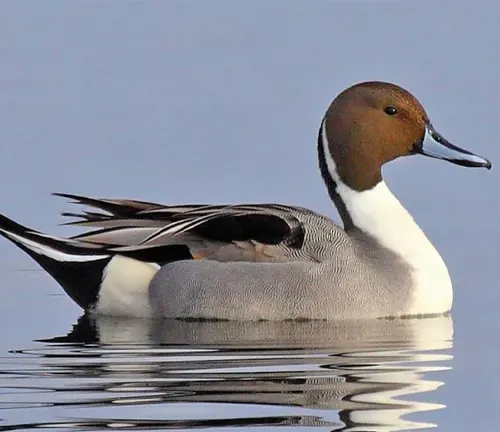
They are omnivorous feeders, consuming a diet primarily composed of plant matter like seeds, aquatic plants, and grasses, along with insects and small invertebrates found in the water. During the breeding season, Northern Pintails engage in elaborate courtship displays, with males showcasing intricate aerial maneuvers and vocalizations to attract females. Once paired, they build nests near water bodies, concealed amidst vegetation. Despite facing threats such as habitat loss, pollution, and overhunting, conservation efforts strive to ensure the survival of this species, recognizing its ecological significance as seed dispersers and contributors to wetland ecosystems.
With its symbolism of fidelity, grace, and beauty, the Northern Pintail holds cultural significance in many societies, featuring prominently in folklore, art, and literature. Overall, the Northern Pintail stands as a testament to the beauty and resilience of nature, deserving of admiration and protection for generations to come.
| Specifications | Details |
|---|---|
| Scientific Name | Anas acuta |
| Common Name | Northern Pintail |
| Body Structure | Elongated neck, slender body |
| Long, pointed wings | |
| Long, tapering tail | |
| Plumage | Males: Chocolate-brown head, white breast |
| Females: Mottled brown plumage for camouflage | |
| Habitat | Wetland habitats including marshes, lakes |
| Found across North America, Europe, Asia, Africa | |
| Diet | Omnivorous |
| Seeds, aquatic plants, grasses, insects | |
| Breeding Behavior | Elaborate courtship displays during breeding |
| Nests built near water, concealed in vegetation | |
| Conservation Status | Least Concern (IUCN Red List) |
| Threats | Habitat loss, pollution, overhunting |
| Conservation Efforts | Habitat restoration, wetland protection |
| Regulation of hunting seasons and bag limits | |
| Lifespan | Average 5 to 7 years in the wild |
A Graceful Wanderer of Wetlands

Ducks are among the most fascinating avian species, with their diverse array of colors, behaviors, and habitats. Among these, the Northern Pintail (Anas acuta) stands out as an elegant and striking species that captures the imagination of birdwatchers and nature enthusiasts alike.
Physical Characteristics
Body Structure
The Northern Pintail possesses a distinctive body structure characterized by its elongated neck, slender body, and long, pointed wings. These features contribute to its graceful appearance both on land and in flight. One of the most notable aspects of the Northern Pintail’s body structure is its long, tapering tail, which extends beyond the rest of its body. This elongated tail is a key identifying feature of the species and gives it a distinctive silhouette, particularly when seen in flight. Additionally, the Northern Pintail’s body is well-adapted for swimming and foraging in aquatic habitats, with webbed feet that provide efficient propulsion through the water.

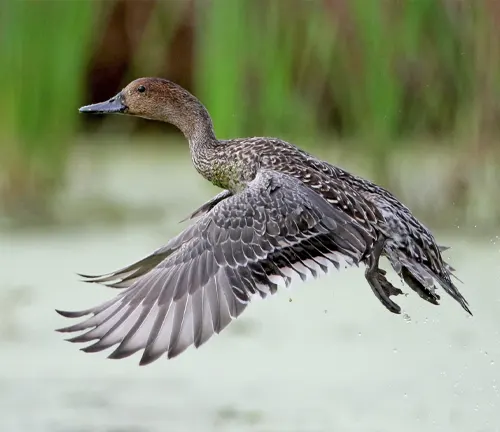
Plumage
Both male and female Northern Pintails exhibit striking plumage, albeit with some differences between the sexes. Male Northern Pintails, known as drakes, display a rich chocolate-brown head and neck, a white breast, and a distinctive white stripe running along the length of their necks. Their overall plumage is intricate and vibrant, especially during the breeding season when they are adorned in their finest colors to attract mates. In contrast, female Northern Pintails, or hens, have more subdued plumage, with mottled brown feathers that provide excellent camouflage, particularly when nesting. This mottled pattern helps female pintails blend seamlessly into their surroundings, offering them protection from predators while caring for their young. Overall, the plumage of the Northern Pintail is not only aesthetically appealing but also serves important functions in terms of camouflage, mate attraction, and thermoregulation.
Habitat and Distribution
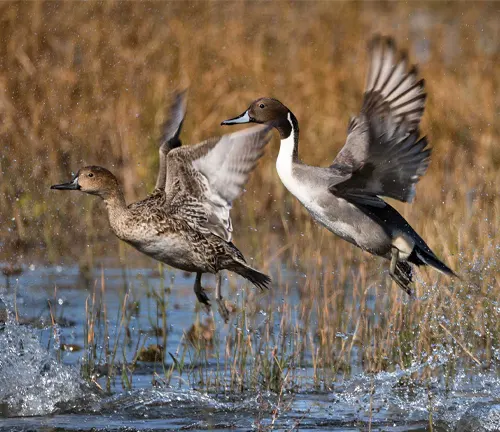
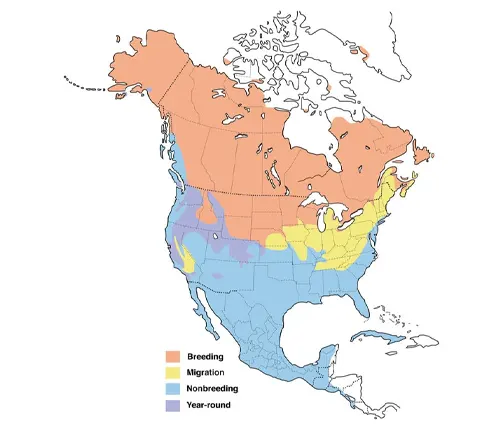
The Northern Pintail is a highly adaptable species of duck that can be found in a wide range of wetland habitats across the globe. These habitats include marshes, swamps, lakes, ponds, rivers, estuaries, and coastal lagoons. They prefer areas with shallow water, abundant vegetation, and ample food resources.
In terms of distribution, Northern Pintails have a broad range that spans across multiple continents. They are native to North America, Europe, Asia, and parts of Africa. During the breeding season, Northern Pintails can be found nesting in northern regions such as Canada, Alaska, Scandinavia, and Siberia, where they utilize freshwater wetlands for nesting and raising their young.
During the non-breeding season, Northern Pintails undergo extensive migrations, with some populations traveling thousands of miles to reach their wintering grounds. These wintering areas are typically located in more temperate regions, including the southern United States, Mexico, Central America, northern Africa, and parts of Asia. Here, they inhabit a variety of coastal and inland wetland habitats, where they forage for food and rest during the winter months.
Behavior and Mating
Feeding Habits
Northern Pintails are omnivorous birds with diverse feeding habits. Their diet primarily consists of plant matter, including seeds, aquatic plants, grasses, and grains. They are known to forage both in shallow water and on land, using their long necks and slender bills to reach and extract food from various sources.
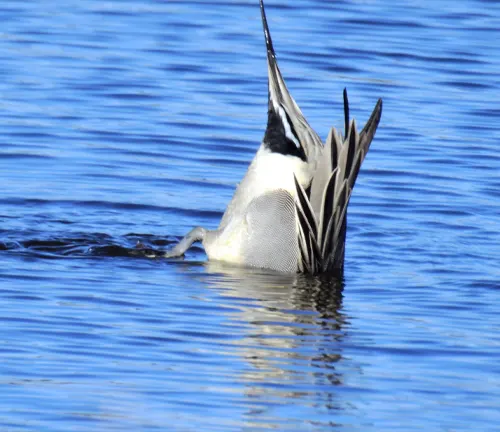
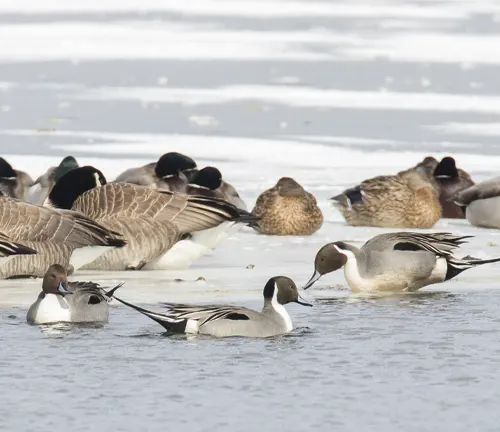
Breeding Season
The breeding season for Northern Pintails typically occurs in the spring and early summer months, coinciding with the availability of suitable nesting sites and optimal environmental conditions. Breeding pairs form during this time, with males engaging in elaborate courtship displays to attract females.
Once paired, Northern Pintails build their nests on the ground, typically concealed amidst dense vegetation near water bodies such as marshes, ponds, or lakes. The female constructs the nest using grasses, reeds, and other plant materials, forming a shallow depression lined with down feathers for insulation.
Conservation Status
Threats
Northern Pintails face various threats that impact their populations and habitats. One of the primary threats is habitat loss and degradation due to human activities such as urbanization, agriculture, and infrastructure development. Wetland habitats, essential for their breeding, nesting, and foraging, are particularly vulnerable to conversion and alteration.
Pollution is another significant threat to Northern Pintails and their habitats. Pollution from agricultural runoff, industrial discharge, and chemical contaminants can degrade water quality, affect food sources, and lead to health issues for these birds.
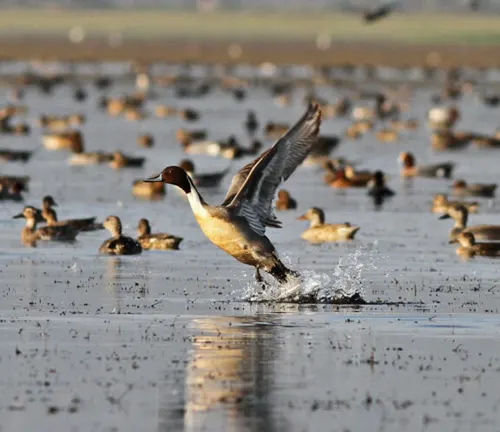
Conservation Efforts
Numerous conservation efforts are underway to mitigate the threats facing Northern Pintails and protect their populations and habitats. Habitat conservation and restoration projects play a crucial role in safeguarding wetland habitats essential for Northern Pintails and other waterfowl species.
Wetland conservation initiatives aim to protect and restore critical breeding, nesting, and foraging habitats for Northern Pintails, ensuring the availability of suitable habitats throughout their range.
Significance to Ecosystem
The Northern Pintail plays a significant role in wetland ecosystems, contributing to their health and functioning in various ways. As a keystone species, Northern Pintails have a disproportionate influence on their environment, affecting the abundance and distribution of other species within their habitat.
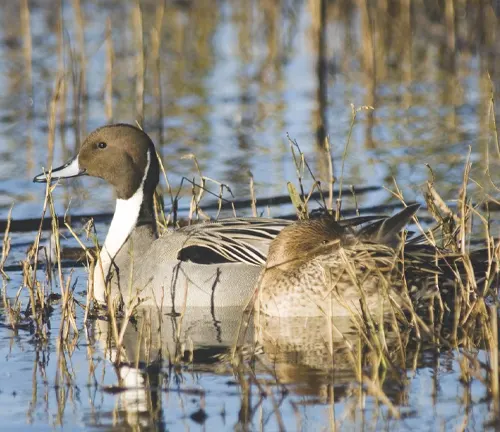
One of the primary roles of Northern Pintails in the ecosystem is as seed dispersers. As they forage for food in wetlands, they inadvertently consume seeds from various plant species. These seeds can then pass through their digestive system unharmed and be dispersed in their feces over wide areas. This process helps to facilitate the germination and dispersal of plant species, promoting biodiversity and ecosystem resilience..
Cultural Significance
Symbolism
The Northern Pintail holds symbolism and cultural significance in various societies and traditions around the world. Across different cultures, this elegant duck is often associated with themes of grace, beauty, and resilience, inspiring awe and admiration among those who encounter it.
Comparison with other Duck Species
Compared to other duck species, Northern Pintails are known for their distinctive appearance and graceful flight. Their long necks and pointed tails set them apart from their counterparts, making them easily recognizable in the wild.
Interesting Facts
- Northern Pintails are among the fastest flying ducks, capable of reaching speeds of up to 65 miles per hour.
- They undertake long-distance migrations, with some individuals traveling thousands of miles between breeding and wintering grounds.
- The collective noun for a group of Northern Pintails is a “pintail” or a “pint.”
Different Species
Garganey
(Anas querquedula)
The Garganey is a small dabbling duck similar in size and shape to the Northern Pintail. It is known for its striking breeding plumage, featuring intricate patterns of brown, white, and chestnut.

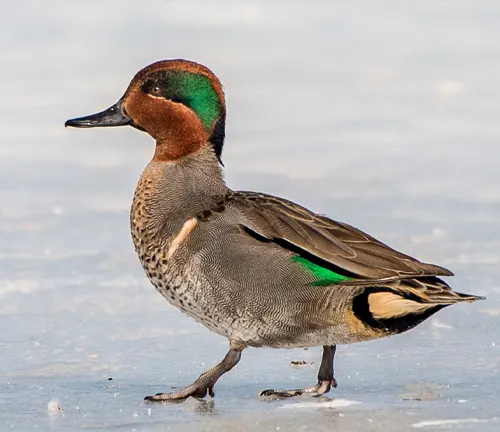
Green-winged Teal
(Anas crecca)
Another dabbling duck closely related to the Northern Pintail, the Green-winged Teal is known for its distinctive green wing patch, which is visible during flight. It is smaller in size compared to the Northern Pintail.
Mallard
(Anas platyrhynchos)
The Mallard is one of the most recognizable duck species globally and shares similar habitats with the Northern Pintail. While it lacks the long, pointed tail characteristic of the Pintail, it exhibits a wide range of plumage variations.
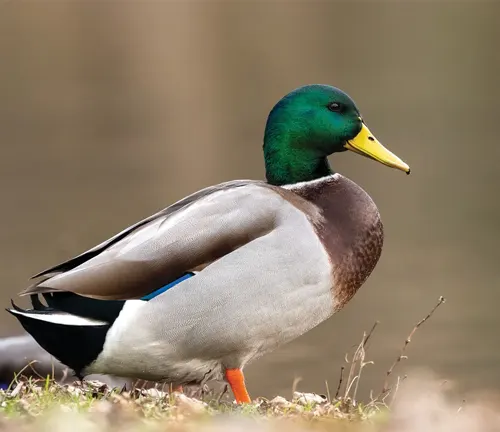
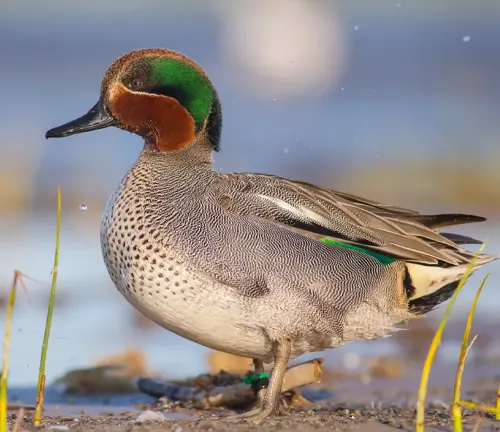
Eurasian Teal
(Anas crecca)
Also known as the Common Teal, this species is closely related to the Green-winged Teal and shares similar habitats. It is smaller than the Northern Pintail and has a distinctive green patch on its face.
Baikal Teal
(Anas formosa)
The Baikal Teal is a striking species with a unique breeding plumage characterized by intricate patterns of iridescent green, purple, and white. It is primarily found in Eastern Asia and shares some habitats with the Northern Pintail during migration
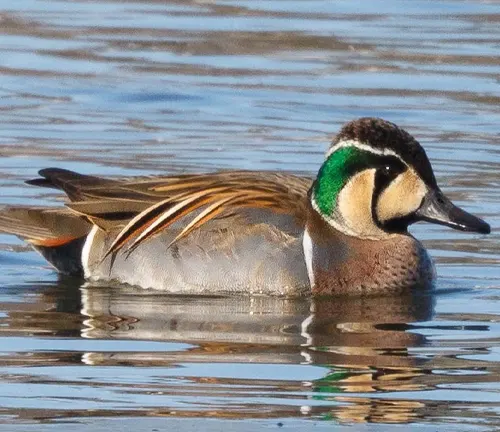
Frequently Asked Question (FAQs)
- Are Northern Pintails migratory birds?
Yes, Northern Pintails are migratory birds, undertaking long-distance migrations between breeding and wintering grounds. - What is the range of the Northern Pintail’s migration?
Northern Pintails migrate across vast distances, with some individuals traveling thousands of miles between breeding grounds in the northern hemisphere and wintering grounds in the southern hemisphere. - How can I identify a Northern Pintail in the wild?
Northern Pintails are distinguished by their long, pointed tails, slender bodies, and distinctive plumage patterns. Males have a chocolate-brown head and white breast, while females display mottled brown feathers. - What is the diet of the Northern Pintail?
Northern Pintails are omnivorous feeders, consuming a diet primarily composed of plant matter such as seeds, aquatic plants, and grasses, along with insects and small invertebrates found in the water. - Where do Northern Pintails build their nests?
Northern Pintails build their nests on the ground near water bodies, often concealed amidst vegetation for protection. - How many eggs does a Northern Pintail typically lay?
Northern Pintails typically lay between 6 to 10 eggs per clutch, with the female responsible for incubating them until they hatch. - What predators do Northern Pintails face?
Northern Pintails face predation from various predators, including mammals such as foxes, raccoons, and mink, as well as birds of prey and larger waterfowl. - What is the conservation status of the Northern Pintail in my region?
The conservation status of Northern Pintails may vary by region, but overall, they are classified as a species of “Least Concern” by the IUCN. However, local populations may face threats and conservation challenges. - Do Northern Pintails form social groups?
Yes, Northern Pintails often gather in flocks, particularly during migration and wintering periods. They may also form pairs during the breeding season. - How can I help conserve Northern Pintails?
You can help conserve Northern Pintails by supporting wetland conservation initiatives, participating in citizen science projects to monitor bird populations, and advocating for policies that protect their habitats.


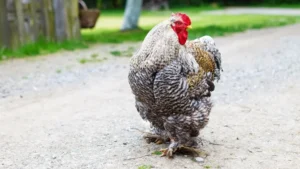
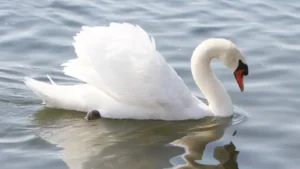
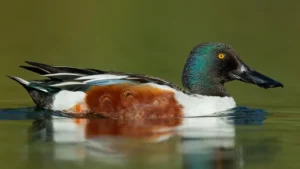
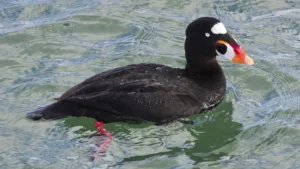
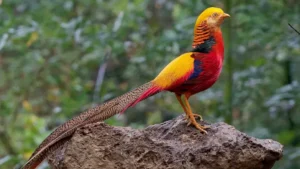
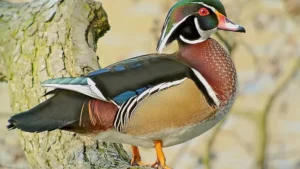
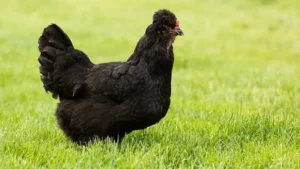
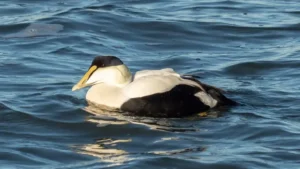

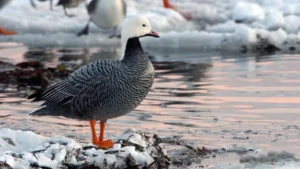
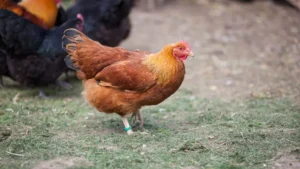
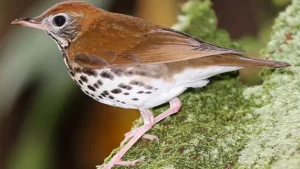
Leave your comment